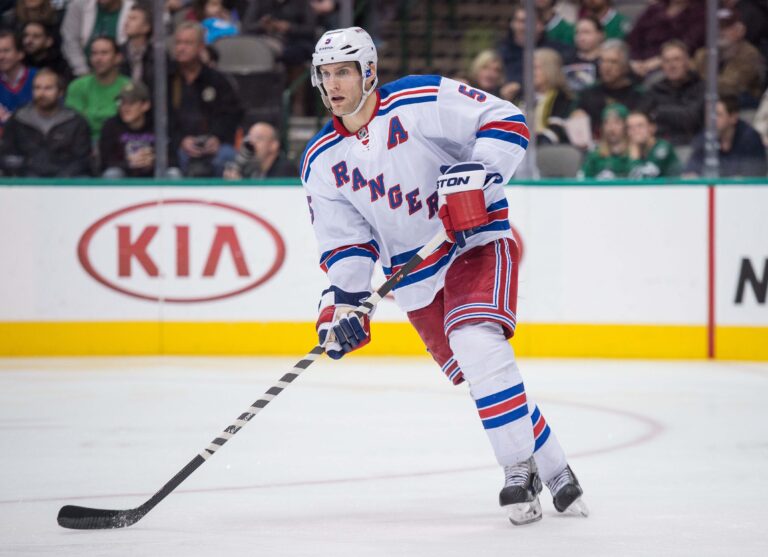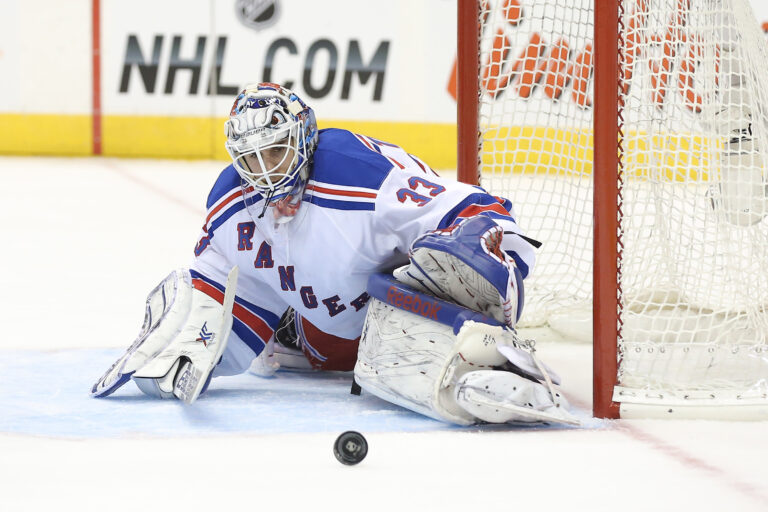Must Read: The New York Rangers’ all-time best free agent lineup.
Must Read: The New York Rangers’ all-time best free agent lineup.
e’re into the dog days of summer. the NHL free agency dust has settled, prospect camp has wrapped up, and now all we have to look ahead to is New York Rangers training camp in September.
What better time to have some fun?
Though this year’s free agency was a bit of a dud for the Rangers, history shows us that hasn’t always been the case. In fact, the Rangers have historically made some big splashes when it comes to signing free agents, so we’re going to make the best roster we can solely with that pool of players.
We tried to focus on what the player did while in New York, thus several well-known stars, like as Guy Lafleur and Markus Naslund, did not make the list because their best days were with other clubs.
When reviewing over this list, it was shocking how few impact defenseman the Rangers had signed throughout their nearly 100-year history, making it difficult to decide who deserved to be on this list.
Finally, this roster is primarily made up of players from the 1990s and later, owing to the fact that player movement was limited prior to the expansion of free agency approximately 30 years ago.
Forwards

Line 1: Artemi Panarin (2019) – Wayne Gretkzy (1996) – Marian Gaborik (2009)
What a first line that would be.
Panarin is arguably (if there’s an argument at all) the best free-agent signing in Blueshirts history. He has 461 points in 350 games with the Rangers, including 120 in 2023-24, second most in a single Rangers season.
Gaborik likely had the title as best free-agent signing before Panarin’s arrival. His departure ahead of the 2013 trade deadline — and subsequent Stanley Cup win with the Los Angeles Kings at the expense of the Rangers in 2014 — soured the feeling towards No. 10, but the talented forward still posted two 40-goal seasons during the three full seasons he played in New York.
Gretzky’s best days were clearly behind him when he arrived in 1996, but don’t let that fool you into thinking he wasn’t a top-tier player. He had back-to-back 90-point seasons his first two years on Broadway, and had a great playoff run with the Rangers in 1997. All told, he had 249 points in 234 games with the Blueshirts to close out his NHL career.
Line 2: Adam Graves (1991) – Mark Messier (2000) – Brendan Shanahan (2006)
Talk about a challenging trio with equal parts skill and physicality.
Graves came to New York as a free agent in 1991, back when compensation was necessary when a player was signed, at the expense of Troy Mallette! The highly popular forward had four 30-goal seasons, including a then-record 52 during the Stanley Cup season of 1993-94. He’s an all-time great Ranger whose No. 9 is displayed at Madison Square Garden.
We’re cheating a little bit here getting Messier on the list due to his return to New York after a three-year stint with the Vancouver Canucks. Clearly this version wasn’t as successful as the first, when he was acquired from the Edmonton Oilers in a 1991 trade and led the Rangers to the Cup in 1994, but Messier was still a mostly-decent middle-six center despite being in his 40s. He had a 24-goal season in 2000-01 and back-to-back 18-goal campaigns before he called it a career in 2004.
Shanahan’s finest days were behind him, but he still had a lot left in the tank, and his arrival in 2006 transformed the character of the Rangers, giving grit and sandpaper to a squad that had been swept by the New Jersey Devils in the 2005-06 Stanley Cup playoffs. Shanahan scored 52 goals in 140 appearances for the Rangers, an amazing figure for a player in his late thirties. Shanahan’s battle with notorious enforcer Donald Brashear in December 2006 is arguably the most memorable image of his Ranger career.
Line 3: Mats Zuccarello (2010) – Mark Pavelich (1981) – Theo Fleury (1999)
Three small forwards, each under 5-foot-8, make up this line that had plenty of pop.
One of the most popular Rangers of the past 25 years, Zuccarello was a mainstay in New York during the franchise’s most successful period since the Cup year in the mid 90s. Signed as an undrafted free agent out of Norway, Zuccarello totaled 352 points in 509 games, and he won the Steven McDonald Award for his “extra effort.”
Pavelich’s numbers are certainly a product of his era, but his numbers don’t lie. He began his NHL career after playing a big role on the United States’ “Miracle On Ice” team in 1980 with back-to-back 30-goal seasons and flirted with point-per-game-numbers during his five seasons in New York, which included a five-goal game in 1983. His 76 points during his rookie year of 1981-82 remains a franchise record to this day.
Fleury’s stint in New York coincided with one of the worst periods in franchise history, not to mention his own personal problems. That clouded the minds of Rangers fans, who lumped him in with unsuccessful signings. Though he wasn’t the same talent he was in Calgary, the 5-foot-6 winger averaged over 63 points in each of his three seasons with the Rangers, including a 30-goal, 74-point season in 2000-01, the height of the dead puck era.
line 4: Martin Straka (2005) – Brad Richards (2011) – Anders Hedberg (1978)
Straka could be one of the most underrated players during the Rangers’ renaissance in the late 2000s. He had two straight 20-goal seasons, including 29 in 2006-07, and was a mainstay on the “Czech Line” and power play. All told, he had 187 points in 224 games with the Blueshirts. Not bad for a journeyman in his mid 30s.
Richards never lived up to the hype of his massive contract, but he was still a useful player for the Rangers, who immediately turned a corner following his addition in the summer of 2011. Richards scored 25 goals — just three shy of his NHL career-best — his first season in New York, when the Rangers reached the Eastern Conference Final for the first time since 1997. After a down year in 2013, Richards turned in another 20-goal season to help the Rangers make it to the Stanley Cup Final in 2014. He finished with 151 points in 210 games with the Blueshirts, and added 28 points in 55 postseason contests.
Hedberg joined in 1978, following a strong career in Europe and the WHA. During his four seasons on Broadway, he only scored 30 goals and helped the Rangers reach the Stanley Cup Final in 1979. The gifted Swede, who came to New York as part of a package deal with center Ulf Nilsson, spent his entire NHL career with the Blueshirts, scoring 397 points in 465 games between 1978-79 and 1984-85.
Defensemen

1st D pair: Darius Kasparaitis (2002) – Dan Girardi (2006)
Kasparaitis bridged the gap between The Dark Ages and the Renaissance. The hard-hitting defenseman arrived for the 2002-03 campaign and was an alternate captain during the 2005-06 season, when Kasparitis introduced the Stick Salute after Rangers wins, something the team still does to this day. His time with the Rangers ended during the 2006-07 season, when he was waived and eventually loaned to a team in the KHL, thus ending his NHL career.
While he’s looked at in mostly unfavorable terms from the Twitter crowd, Girardi was a gritty defenseman in the same mold as current Rangers blueliner Ryan Lindgren. He was a key part of Rangers teams that had their longest run of success this side of the 1994 Stanley Cup. Girardi, who was signed as an undrafted free agent, rose from the ECHL all the way to becoming an NHL All Star. In parts of 11 seasons, Girardi averaged more than 22 minutes of ice time per game and missed the playoffs just once during his tenure. Here’s hoping that with time, Girardi gets the credit he so deserves from Rangers fans.
2nd D pair: Bruce Driver (1995) – Anton Stralman (2011)
Former Devils never seem to work out for the Rangers, and it’s more of a testament to the slim pickings than Driver’s success in New York that he’s on this list. After 12 season in New Jersey, Driver signed with the Rangers as a 33-year-old before the 1995-96 season. He spent three seasons in New York and was a mostly-serviceable bottom-four blueliner. His high point was 37 points his first season as a Ranger.
Stralman was the analytics darling of those mid-2010s teams, though largely underrated, too. He played three steady seasons in New York, helping the Rangers advance to two conference finals and the Stanley Cup Final in 2014.
3rd D pair: Marek Malik (2005) – Michal Roszival (2005)
Malik somewhat defines the Tom Renney post-lockout Rangers, thanks in large part to his legendary shootout goal in the 15th round against the Washington Capitals at the start of the 2005-06 season. But he was a fine bottom-four defenseman who was likely used more out of necessity than anything else.
Another lynchpin of the Renney era, Roszival was a mainstay on those post-lockout teams that always snuck into the playoffs but were never really a threat. The offensive-defenseman turned in some strong seasons with the Rangers, including a 40-point campaign in 2006-07. His most memorable moment in New York was his overtime-winner in the second round against the Buffalo Sabres in the 2007 playoffs. He finished with 176 points in 436 games with the Rangers.
Goalies

Goalies: Chuck Rayner (1950) and Cam Talbot (2010)
We’re going way back for this one, but it’s hard to keep a goalie who won the Hart Trophy off this list. Rayner never finished with a winning record but did lead the Rangers to the 1950 Stanley Cup Final, where they lost in Game 7. Had they won that game, 1940 would have never been a thing. Rayner was elected to the Hockey Hall of Fame in 1973.
Talbot signed with the Rangers as an undrafted free agent in 2010 and worked his way up from the ECHL. He made his NHL debut in 2013-14 as Henrik Lundqvist’s backup and finished that season with 12-6-1 record, terrific 1.64 goals-against average and sterling .941 save percentage., But it was the following season that earns Talbot a spot on this list. He was 21-9-4 in 2014-15, including a spectacular run when Lundqvist missed a chunk of time due to injury. His performance helped the Rangers win the Presidents’ Trophy, and he won the Steven McDonald Award. Talbot finished his two seasons with the Rangers 33-15-5 with a .931 save percentage and 2.00 goals-against average.



